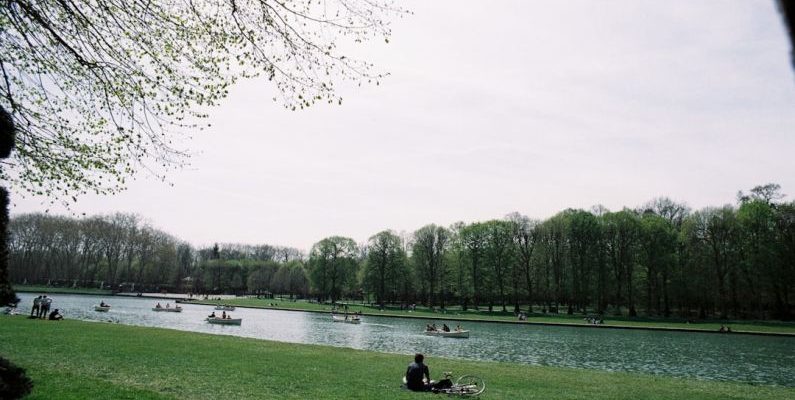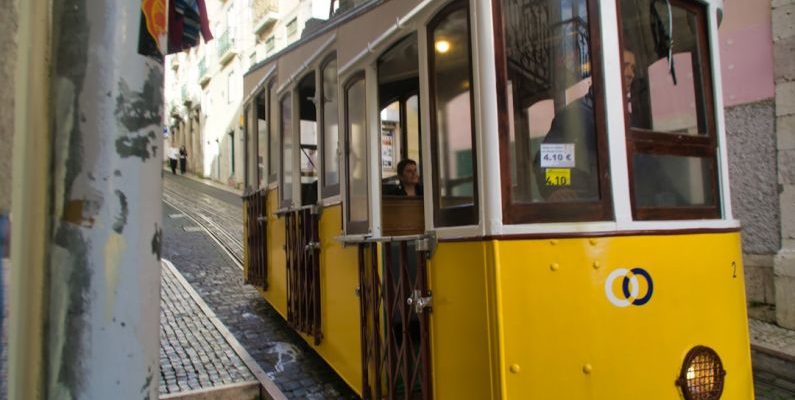In today's fast-paced world, staying connected while traveling internationally is more important than ever. Whether you're traveling for business or pleasure, having a reliable and affordable international SIM card can make all the difference in keeping you connected to your loved ones, colleagues, and the digital world. With a plethora of options available in the market, it can be overwhelming to choose the best international SIM card for your needs. This article will explore some of the top international SIM card options to help you make an informed decision and stay connected wherever you go.
Travel Tips
In Travel Tips
Planning a vacation is an exciting endeavor, filled with endless possibilities and opportunities to explore new destinations. One crucial factor to consider when deciding on the perfect time to visit your favorite destinations is the season. Each location offers a unique experience depending on the time of year, with varying weather conditions, crowd levels, and activities. By carefully selecting the right season for your travels, you can ensure an unforgettable and tailored experience. Let's delve into how to choose the best season for your favorite destinations.
**Exploring the Dynamic Seasons**
The world is a diverse tapestry of climates and landscapes, each offering a different experience depending on the time of year. From the snowy peaks of the Alps to the sun-soaked beaches of the Caribbean, every destination has its own peak seasons and off-peak periods. Understanding the dynamic nature of these seasons is essential when planning your travels to make the most of your trip.
**Consider the Weather Conditions**
One of the primary factors to consider when choosing the best season for your favorite destinations is the weather conditions. Some destinations are best enjoyed during the sunny and warm summer months, while others shine during the cool and crisp fall or winter seasons. Researching the typical weather patterns of your chosen location can help you determine the ideal time to visit for your desired activities.
**Avoiding Peak Tourist Seasons**
Peak tourist seasons can significantly impact your travel experience, with crowded attractions, higher prices, and limited availability. By opting to visit during the shoulder or off-peak seasons, you can enjoy a more relaxed and authentic experience, with fewer crowds and better deals on accommodations and activities. Be sure to check for any major events or holidays that may coincide with your travel dates to avoid any unexpected surprises.
**Embracing Seasonal Activities**
Each season offers unique activities and experiences that can enhance your travel adventures. Whether you're looking to hit the slopes for some winter skiing, explore blooming gardens in the spring, relax on a beach during the summer, or hike through colorful foliage in the fall, choosing the right season can make all the difference in your itinerary. Consider what activities are important to you and plan your travels accordingly to make the most of your trip.
**Cultural Festivals and Events**
Many destinations around the world host vibrant cultural festivals and events throughout the year, celebrating everything from music and food to art and history. By researching the annual calendar of events for your favorite destinations, you can align your travels with these unique experiences and immerse yourself in the local culture. From Oktoberfest in Germany to the Cherry Blossom Festival in Japan, these events can add an extra layer of excitement to your trip.
**Off-Season Benefits**
While peak seasons may be the most popular times to visit certain destinations, off-peak seasons have their own benefits worth considering. Lower prices on accommodations and flights, fewer crowds at popular attractions, and a more relaxed pace of travel are just a few advantages of traveling during the off-season. If you don't mind a bit of unpredictable weather or limited availability, exploring your favorite destinations during the quieter months can offer a more intimate and budget-friendly experience.
**Making an Informed Decision**
Choosing the best season for your favorite destinations requires careful consideration and research to ensure a memorable and enjoyable trip. By weighing the weather conditions, crowd levels, seasonal activities, cultural events, and off-peak benefits, you can tailor your travels to suit your preferences and create lasting memories. Whether you prefer the hustle and bustle of peak tourist seasons or the tranquility of off-peak travel, selecting the right season can make all the difference in your overall experience. So, pack your bags, plan your itinerary, and embark on an adventure tailored to the season that suits you best.
In Travel Tips
Embarking on a culinary journey in a new city is an exciting experience that allows you to explore the local flavors and immerse yourself in the culture. While popular tourist spots may offer a taste of the city, the most authentic dining experiences are often found in the hidden gems - the local eateries that cater to residents rather than visitors. If you are a food enthusiast seeking to uncover the best of what a city has to offer, here are some tips on finding the most authentic local eateries.
Exploring Neighborhoods Off the Beaten Path
Venturing beyond the main tourist areas and into the neighborhoods where locals live and work is key to discovering authentic local eateries. These neighborhoods often boast a diverse culinary scene with eateries that have been serving up traditional dishes for generations. Take a stroll through the streets away from the tourist hotspots, and you may stumble upon cozy cafes, bustling markets, and family-run restaurants that offer a taste of the city's true essence.Following the Locals
One of the most reliable ways to find authentic local eateries is to observe where the locals dine. If a restaurant is filled with locals, it is a good indication that the food is delicious and the atmosphere is genuine. Pay attention to where locals gather for meals - whether it's a busy lunch spot during the workweek or a bustling dinner destination on weekends. Following the locals will lead you to hidden culinary treasures that may not be listed in guidebooks but are beloved by those who call the city home.Seeking Recommendations from Residents
Engaging with residents and seeking their recommendations is a valuable way to uncover authentic local eateries. Strike up a conversation with locals at markets, shops, or community events and ask them where they like to eat. Residents are often eager to share their favorite spots with visitors and may guide you to lesser-known eateries that offer a truly authentic experience. Whether it's a hole-in-the-wall joint known for its homemade specialties or a family-owned restaurant with a loyal following, the recommendations of residents can lead you to culinary delights you won't find elsewhere.Exploring Food Markets and Street Food
Food markets and street food stalls are vibrant hubs of local culinary culture, offering a wide array of authentic dishes to sample. Wander through a bustling market and indulge in street food delicacies prepared right in front of you. From freshly grilled seafood to aromatic spices and exotic fruits, food markets provide a sensory feast that captures the essence of a city's cuisine. Be open to trying new flavors and dishes, and you may discover hidden gems that become your new favorite dining spots.Connecting with Food Bloggers and Local Foodies
In the digital age, food bloggers and local foodies are valuable resources for discovering the best local eateries in a city. Follow food bloggers who specialize in the cuisine of the city you are visiting and read their reviews and recommendations. Engage with local foodies on social media platforms and seek their advice on where to find authentic dining experiences. By tapping into the knowledge and expertise of food enthusiasts, you can gain insights into the culinary scene of a city and uncover hidden gems that may not be widely known.Sampling Regional Specialties and Traditional Dishes
To truly experience the authenticity of a city's culinary scene, be sure to sample regional specialties and traditional dishes that are unique to the area. Whether it's a classic street food snack, a beloved comfort food dish, or a time-honored recipe passed down through generations, exploring regional cuisine is a delicious way to connect with the local culture. Be adventurous in your culinary explorations and savor the flavors that define the city's gastronomic identity.Embracing the Spirit of Adventure
Above all, finding the most authentic local eateries requires a spirit of adventure and a willingness to step outside your comfort zone. Embrace the unknown, try new flavors, and immerse yourself in the culinary traditions of the city you are visiting. Whether you stumble upon a hidden gem while wandering the streets or follow a local's recommendation to a beloved eatery, every dining experience is an opportunity to discover the heart and soul of a city through its food.Unveiling the Culinary Soul of a City
In conclusion, uncovering the most authentic local eateries is a rewarding journey that allows you to connect with the culinary soul of a city. By exploring neighborhoods off the beaten path, following the locals, seeking recommendations from residents, exploring food markets and street food, connecting with food bloggers and local foodies, sampling regional specialties, and embracing the spirit of adventure, you can discover hidden culinary treasures that offer a true taste of the city. So, set out on your culinary adventure with an open mind and a hearty appetite, and let the flavors of the city guide you to unforgettable dining experiences that capture the essence of the local culture.
In Travel Tips
In an increasingly interconnected world, the ability to communicate effectively across different languages is becoming a valuable skill. Language barriers can present challenges in various aspects of life, from traveling to conducting business or even making friends. However, with the right approach and some practical tips, navigating these barriers can become much easier and more manageable.
Understanding the Challenges
Language barriers can manifest in different forms, such as not being able to understand or speak a particular language fluently, misinterpreting cultural cues, or struggling to express oneself clearly. These challenges can lead to misunderstandings, frustration, and even missed opportunities. Recognizing the impact of language barriers is the first step towards finding effective solutions.Use Simple and Clear Language
When communicating with someone who speaks a different language, it's essential to use simple and clear language. Avoid slang, jargon, or complex terms that may not be easily understood. Speak slowly, enunciate clearly, and use gestures or visual aids to help convey your message. Remember, the goal is to facilitate understanding, so simplicity is key.Listen Actively
Effective communication is a two-way street, and listening actively is just as important as speaking clearly. Pay attention to non-verbal cues, such as facial expressions and body language, to better understand the other person's message. Avoid interrupting and give the speaker time to express themselves fully before responding. Active listening shows respect and helps bridge the gap created by language differences.Utilize Technology
Technology has made it easier than ever to overcome language barriers. Apps and online tools can provide instant translation services, allowing you to communicate in real-time with people who speak different languages. Whether it's a translation app on your smartphone or a computer-based software, leveraging technology can facilitate smoother communication and enhance cross-cultural interactions.Learn Basic Phrases
If you frequently interact with people who speak a different language, taking the time to learn some basic phrases can go a long way. Simple greetings, expressions of gratitude, and common questions can help break the ice and show your willingness to engage with others in their language. Making an effort to learn a few words in another language demonstrates respect and can foster positive connections.Cultural Sensitivity
Language is deeply intertwined with culture, so it's essential to be culturally sensitive when communicating across language barriers. Be mindful of cultural differences in communication styles, gestures, and social norms. Educate yourself about the customs and traditions of the people you are interacting with to avoid unintentional misunderstandings or offense.Seek Clarification
If you are unsure about something the other person has said or if you suspect a misunderstanding, don't hesitate to seek clarification. Asking for clarification shows that you are actively engaged in the conversation and are committed to ensuring mutual understanding. It's better to ask for clarification than to make assumptions that could lead to confusion.Practice Patience and Empathy
Navigating language barriers requires patience and empathy. It's normal to encounter challenges and misunderstandings along the way, but approaching these situations with a positive attitude and a willingness to learn can make a significant difference. Practice empathy by putting yourself in the other person's shoes and showing understanding for their efforts to communicate.Embrace Diversity
Language barriers are not just obstacles to overcome but opportunities to embrace diversity and learn from different cultures. By approaching cross-linguistic communication with an open mind and a curiosity to explore new perspectives, you can turn language barriers into bridges that connect people from different backgrounds. Celebrate the richness of linguistic diversity and the unique insights it brings to our interactions. In conclusion, navigating language barriers requires a combination of practical strategies, cultural awareness, and a positive attitude. By following these tips and being mindful of the challenges posed by language differences, you can enhance your communication skills and build meaningful connections across linguistic divides. Embrace the opportunity to learn from others, celebrate diversity, and strive for effective cross-cultural communication in all your interactions.
In Travel Tips
Europe is a continent adorned with a plethora of well-known destinations that attract millions of tourists each year. However, nestled amidst these popular spots are hidden gems waiting to be discovered by the more intrepid traveler. These lesser-known treasures offer a unique and authentic experience, away from the crowds and hustle of mainstream tourism. The best time to visit these European hidden gems can vary depending on a range of factors such as weather, crowds, and local events. Here, we explore some of these enchanting destinations and when is the optimal time to visit them for an unforgettable experience.
**Slovenia's Lake Bled: Spring Blossoms and Fall Colors**
Tucked away in the heart of the Julian Alps, Lake Bled is a picture-perfect destination that seems straight out of a fairytale. The best time to visit this hidden gem is during the spring when the cherry blossoms are in full bloom, creating a stunning contrast against the emerald-green waters of the lake. The weather is mild, and the crowds are fewer, allowing you to explore the charming island with its iconic church and castle in peace. Alternatively, visiting in the fall offers a different kind of beauty, with the surrounding forests ablaze in a riot of colors, making it a photographer's dream.
**Portugal's Azores: Year-Round Paradise**
The Azores, an archipelago of nine volcanic islands in the middle of the Atlantic Ocean, is a hidden gem that beckons travelers seeking untouched natural beauty. The best time to visit the Azores is truly year-round, as the islands boast a mild climate with temperatures rarely going below 14°C or above 26°C. Whether you visit in the summer for whale watching, in the fall for hiking through lush green landscapes, or in the winter for soaking in hot springs, the Azores offer a diverse range of experiences for all seasons.
**Montenegro's Bay of Kotor: Summer Sun and Winter Serenity**
Nestled between towering mountains and a sparkling bay, the Bay of Kotor in Montenegro is a hidden gem that offers a blend of natural beauty and historical charm. The best time to visit is during the summer months when the sun shines bright, and you can explore the quaint villages, medieval churches, and fortresses dotting the bay. For a different experience, consider visiting in the winter when the crowds have dispersed, and a serene blanket of snow covers the landscape, creating a peaceful and magical atmosphere.
**Bulgaria's Rila Monastery: Fall Foliage and Winter Tranquility**
The Rila Monastery, located in the scenic Rila Mountains of Bulgaria, is a UNESCO World Heritage Site and a hidden gem that exudes timeless beauty and spirituality. The best time to visit is during the fall when the surrounding forests are ablaze with hues of red, orange, and gold, creating a stunning backdrop to the monastery's ornate architecture. Alternatively, visiting in the winter offers a different perspective, with the monastery dusted with snow, giving it a sense of tranquility and isolation that is truly enchanting.
**Croatia's Plitvice Lakes National Park: Spring Blooms and Autumn Reflections**
Plitvice Lakes National Park in Croatia is a hidden gem that boasts a series of cascading lakes, waterfalls, and lush forests that seem straight out of a dream. The best time to visit is during the spring when the park comes alive with vibrant blooms and the waterfalls are at their most spectacular due to the snowmelt. Alternatively, visiting in the autumn offers a different experience, with the foliage turning shades of gold and crimson, creating a mesmerizing reflection on the crystal-clear waters of the lakes.
**Exploring Europe's Hidden Gems**
Europe's hidden gems offer a unique and authentic experience for travelers looking to venture off the beaten path and discover lesser-known treasures. Whether you prefer the cherry blossoms of Lake Bled in the spring, the year-round paradise of the Azores, or the fall foliage of the Rila Monastery, each destination has its own charm and allure. By choosing the best time to visit these hidden gems, you can immerse yourself in their beauty and create unforgettable memories that will last a lifetime. So pack your bags, set off on an adventure, and uncover the magic of Europe's hidden treasures.
In Travel Tips
Traveling to a new destination can be an exciting adventure, but packing for the trip can often be a daunting task. Whether you're heading to a bustling city, a tropical beach, or a rugged mountain range, having the right items with you can make all the difference in your travel experience. To ensure you are prepared for any destination, here is an essential packing list to guide you through your next journey.
Research and Plan Accordingly
Before you start packing your bags, it's crucial to research the destination you'll be visiting. Take into account the weather, local customs, and activities you plan to engage in during your trip. This information will help you pack efficiently and ensure you have everything you need for a comfortable and enjoyable experience.Clothing Essentials
When it comes to clothing, versatility is key. Pack items that can be mixed and matched to create different outfits and adapt to various weather conditions. Consider packing a few basic tops, bottoms, and outer layers that can be layered for warmth or removed for cooler weather. Don't forget to pack comfortable shoes suitable for walking and any specific attire required for activities like hiking, swimming, or dining out.Toiletries and Personal Care Items
Having your favorite toiletries and personal care items can help you feel more at home while traveling. Pack travel-sized bottles of shampoo, conditioner, body wash, and lotion to save space in your luggage. Don't forget essentials like toothpaste, a toothbrush, deodorant, and any medications you may need. A small first aid kit with bandages, pain relievers, and other essentials can also come in handy during your trip.Travel Documents and Money
Make sure to pack all your travel documents, including your passport, visa (if required), travel insurance information, and any necessary tickets or reservations. It's also a good idea to carry copies of these documents both in print and electronically. Don't forget to bring some local currency and a credit card for purchases and emergencies.Electronics and Gadgets
In today's digital age, electronics have become essential travel companions. Don't forget to pack your smartphone, charger, and any necessary adapters for the destination you are visiting. A portable power bank can also be a lifesaver when you need to recharge your devices on the go. If you plan to capture memories of your trip, consider bringing a camera or GoPro to document your adventures.Travel Accessories
Certain travel accessories can make your journey more comfortable and convenient. Consider packing a travel pillow and blanket for long flights or bus rides, a reusable water bottle to stay hydrated, and a travel journal to record your experiences. A lightweight daypack can also be useful for carrying essentials while exploring your destination.Emergency Essentials
While no one likes to think about emergencies while traveling, it's essential to be prepared for unexpected situations. Pack a small flashlight, a multi-tool, and a whistle for safety. It's also a good idea to have a photocopy of your passport and emergency contact information in case your documents are lost or stolen.Snacks and Entertainment
Having snacks and entertainment options can make long travel days more enjoyable. Pack some non-perishable snacks like nuts, granola bars, or dried fruit to curb hunger between meals. Consider bringing a book, magazine, or puzzle to keep yourself entertained during downtime or delays.Final Thoughts
Packing for a trip can be a stressful task, but with the right essentials on hand, you can set off on your journey with confidence. By planning ahead, researching your destination, and packing smartly, you can ensure you have everything you need for a memorable travel experience. Bon voyage!
In Travel Tips
Traveling to a foreign country can be an exciting and enriching experience, but it's essential to be aware of the cultural norms and etiquette of the destination you are visiting. Different cultures have varying customs and traditions, and what may be acceptable behavior in one country could be considered rude or disrespectful in another. By familiarizing yourself with the do's and don'ts of cultural etiquette, you can show respect for the local customs and make a positive impression on the people you meet during your travels.
Respect for Personal Space
One important aspect of cultural etiquette to keep in mind when traveling abroad is the concept of personal space. In many Western cultures, people are accustomed to standing at arm's length from each other during conversations. However, in some countries, such as those in the Middle East or Asia, people may stand closer together while speaking. It's important to be mindful of personal space boundaries and adjust your behavior accordingly to avoid making others feel uncomfortable.Greetings and Gestures
Greetings are an essential part of cultural etiquette in many countries. In some cultures, such as Japan, bowing is a common form of greeting, while in other countries, a handshake or a kiss on the cheek may be more appropriate. It's essential to research the typical greeting customs of the country you are visiting and follow suit. Additionally, be aware of cultural differences in gestures – what may be a friendly gesture in one country could be considered offensive in another.Dress Code
Understanding the dress code of a foreign country is crucial when it comes to cultural etiquette. In some cultures, such as those in the Middle East, women are expected to dress modestly, covering their arms and legs. In contrast, in Western countries, more casual attire may be acceptable. Before traveling, research the dress code norms of your destination and pack clothing that aligns with local customs to show respect for the culture.Table Manners
Table manners vary widely across different cultures, so it's essential to familiarize yourself with the dining etiquette of the country you are visiting. In some cultures, such as in Japan, slurping noodles is considered a sign of enjoying the meal, while in Western countries, it may be seen as impolite. Pay attention to how locals behave during meals and follow their lead to avoid unintentionally offending anyone.Gift Giving
Gift giving is a common practice in many cultures, but the customs surrounding it can vary significantly. In some countries, such as China, gifts are typically presented with two hands as a sign of respect, while in other cultures, such as the United States, one hand is sufficient. When giving gifts abroad, consider the cultural significance of the gesture and follow local customs to show appreciation.Language and Communication
Language is a crucial aspect of cultural etiquette when traveling abroad. While it may not be feasible to learn an entire language before your trip, knowing a few basic phrases in the local language can go a long way in showing respect for the culture. Additionally, be mindful of your tone and volume when speaking, as these factors can vary in importance across different cultures.Adaptability and Open-mindedness
The key to navigating cultural etiquette abroad is to approach each new experience with adaptability and open-mindedness. Be willing to learn about and respect the customs of the country you are visiting, even if they differ from your own. By demonstrating a willingness to embrace new ways of thinking and behaving, you can forge meaningful connections with people from diverse backgrounds and make the most of your travel experiences. In conclusion, cultural etiquette dos and don'ts play a significant role in ensuring respectful interactions and positive experiences while traveling abroad. By familiarizing yourself with the customs and traditions of the country you are visiting, you can show respect for the local culture and make a positive impression on those you encounter. Remember to approach each new experience with an open mind and a willingness to learn, and you are sure to create lasting memories wherever your travels may take you.
In Travel Tips
Traveling can be an exciting and enriching experience, but it can also disrupt our usual routines, including our fitness habits. It's easy to fall into the trap of indulging in delicious foods and skipping workouts while on the road. However, staying fit while traveling is not as challenging as it may seem. With a little bit of planning and creativity, you can incorporate exercise into your travel itinerary and maintain your fitness levels even when away from home.
**Pack the Right Gear**
When preparing for your trip, make sure to pack the right gear to help you stay active on the go. Consider bringing lightweight and versatile items such as resistance bands, a jump rope, or a yoga mat that can easily fit into your luggage. Comfortable workout clothes and a good pair of sneakers are also essential for staying active while traveling. Having the right gear on hand will make it easier for you to squeeze in a quick workout wherever you are.
**Explore Active Sightseeing**
One of the best ways to stay fit while traveling is to incorporate physical activities into your sightseeing adventures. Instead of taking a tour bus or taxi, opt for walking or biking to explore a new city. Walking tours or hiking excursions are not only great ways to stay active but also allow you to immerse yourself in the local culture and discover hidden gems off the beaten path. Additionally, many cities offer outdoor activities such as kayaking, paddleboarding, or rock climbing that can add an element of fun and fitness to your travel experience.
**Utilize Hotel Amenities**
Most hotels and accommodations offer fitness facilities that guests can access during their stay. Take advantage of these amenities by scheduling a workout session in the hotel gym or going for a swim in the pool. If the weather permits, you can also opt for outdoor activities like jogging around the hotel grounds or practicing yoga on the rooftop terrace. Many hotels also offer fitness classes or guided outdoor activities that you can participate in to stay active while on the road.
**Embrace Bodyweight Exercises**
When access to a gym or equipment is limited, bodyweight exercises are your best friend for staying fit while traveling. Exercises such as push-ups, squats, lunges, and planks require no equipment and can be done anywhere, whether in your hotel room or at a nearby park. You can easily create a full-body workout routine using just your body weight, allowing you to maintain your strength and flexibility even without a gym.
**Stay Hydrated and Eat Mindfully**
Maintaining a healthy diet and staying hydrated are essential components of staying fit while traveling. Be mindful of what you eat and try to make healthy choices even when indulging in local cuisine. Opt for fresh fruits and vegetables, lean proteins, and whole grains to fuel your body for your adventures. Drinking plenty of water throughout the day will not only keep you hydrated but also help regulate your appetite and energy levels, making it easier to resist unhealthy temptations.
**Prioritize Rest and Recovery**
While staying active is important, it's also crucial to prioritize rest and recovery while traveling. Jet lag, long flights, and constant sightseeing can take a toll on your body, so make sure to listen to your body's signals and give yourself time to rest when needed. Adequate sleep, stretching, and relaxation techniques such as meditation or yoga can help you recharge your energy levels and prevent burnout during your travels.
**Find Local Fitness Communities**
If you enjoy group workouts or classes, consider joining local fitness communities or studios while traveling. Many cities offer drop-in classes for yoga, dance, or other fitness activities that can be a fun way to meet locals and stay active during your trip. Engaging with the local fitness scene can also provide you with insider tips on the best running routes, hiking trails, or outdoor fitness events in the area.
**Conclusion:**
Staying fit while traveling doesn't have to be a daunting task. By incorporating physical activities into your daily routine, making healthy food choices, and prioritizing rest and recovery, you can maintain your fitness levels and feel your best while exploring new destinations. Whether it's exploring a city on foot, doing bodyweight exercises in your hotel room, or joining a local fitness class, there are plenty of ways to stay active and healthy on the road. Remember that staying fit while traveling is not just about physical health but also about enjoying the journey and making the most of your travel experiences.
In Travel Tips
Airline miles are a valuable currency in the world of travel, offering the opportunity to earn free flights and upgrades simply by making everyday purchases. Maximizing your airline miles can lead to significant savings and even allow you to experience luxury travel for a fraction of the cost. By understanding how to strategically accumulate and redeem your miles, you can unlock a world of travel possibilities without breaking the bank.
Understanding Airline Miles Programs
Before diving into the tactics for maximizing your airline miles, it's crucial to have a solid grasp of how airline miles programs work. Most major airlines offer loyalty programs that reward customers with miles based on the distance flown, ticket price, or credit card spending. These miles can then be redeemed for flights, upgrades, hotel stays, and other travel-related perks. By joining these programs and actively accumulating miles, you can set yourself up for free or discounted travel in the future.Strategic Credit Card Usage
One of the most effective ways to earn airline miles quickly is through strategic credit card usage. Many credit card companies offer rewards cards that allow you to earn miles for every dollar spent on purchases. By using these cards for everyday expenses such as groceries, gas, and dining out, you can accumulate miles at a faster rate. Some cards also offer sign-up bonuses, which can provide a significant boost to your mileage balance. Be sure to pay off your balance in full each month to avoid accruing interest and fees that could negate the benefits of earning miles.Take Advantage of Promotions and Bonus Offers
Airlines frequently run promotions and bonus offers that allow you to earn extra miles for specific actions or purchases. Keep an eye out for these opportunities and take advantage of them whenever possible. This could include signing up for a new credit card with a generous sign-up bonus, booking flights during a promotional period, or participating in partner promotions that offer bonus miles for certain activities. By staying informed about these offers and actively engaging with them, you can accelerate your mileage earnings and get closer to your next free trip.Strategic Redemption Tactics
Once you've accumulated a substantial number of airline miles, it's essential to strategize how to redeem them for maximum value. Look for opportunities to book flights during off-peak times or choose less popular routes to get the most out of your miles. Additionally, consider using your miles for upgrades to business or first class, where the value per mile is often higher than for economy seats. Keep an eye out for award seat availability and be flexible with your travel dates to increase your chances of finding redemption options that offer the best value for your miles.Pooling Miles with Family and Friends
Pooling miles with family and friends can be a smart strategy for maximizing your mileage balance and unlocking more travel opportunities. Some airlines allow you to combine miles with other members of your household or travel group, enabling you to book flights that require a higher mileage balance than you have individually. By pooling your miles together, you can access more redemption options and enjoy free trips that might have been out of reach otherwise.Conclusion: Travel More, Spend Less
Maximizing your airline miles for free trips is all about being strategic and proactive in how you earn and redeem your miles. By understanding how airline miles programs work, using credit cards strategically, taking advantage of promotions, and pooling miles with others, you can make the most of this valuable travel currency. With a bit of planning and creativity, you can travel more often and more luxuriously while spending less money out of pocket. Start implementing these tactics today and watch your mileage balance soar as you embark on your next adventure.
In Travel Tips
Traveling can be an exhilarating experience, but choosing the right travel backpack can make or break your trip. With so many options available, it can be overwhelming to select the perfect backpack that meets all your needs. From size and features to comfort and durability, there are several factors to consider before making your purchase. To help you navigate through the sea of backpacks, here are some essential tips on how to choose the right travel backpack.









